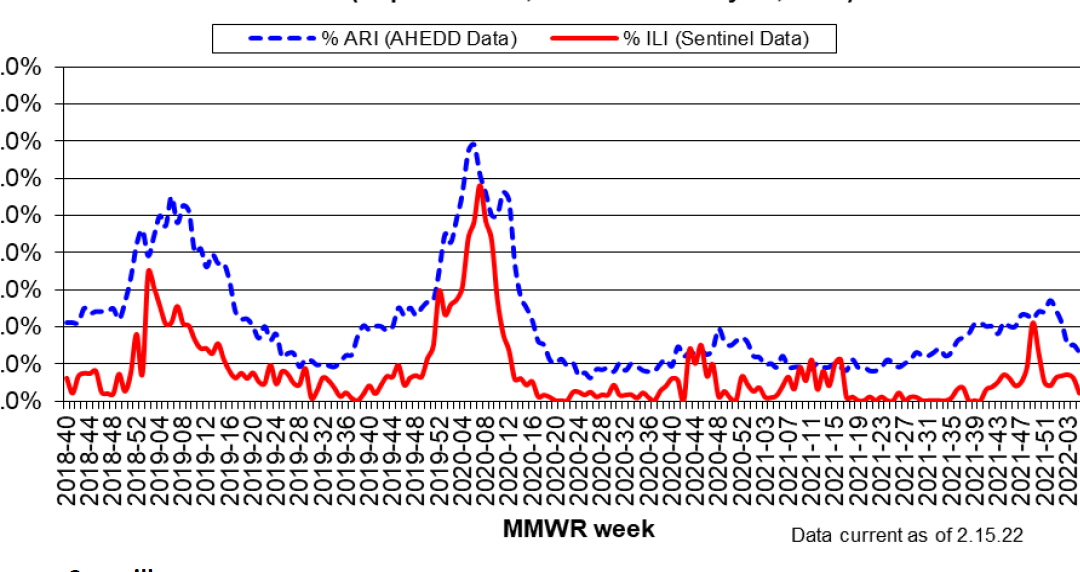This is my “COVID tracker” column in the Monitor for Feb. 21:
This column tracks COVID-19 in New Hampshire, but today we’ll look at a related issue: tracking influenza.
The annual scourge of the flu, which kills tens of thousands around the globe yearly, almost disappeared in 2020 because we were wearing masks and staying apart rather than inhaling each other’s germ-carrying aerosol particles. In 2021 flu started to return as vaccination and societal fatigue made us abandon COVID-19 practices, but it’s still pretty quiescent.
“Flu activity overall continues to be low, both in New Hampshire and nationally,” said Dr. Benjamin Chan, the state epidemiologist. “At the end of December we started to see an uptick, but it has come down since then.”
So far this flu season, which starts in the fall and generally hits a peak about now, there have been 7 adult deaths in New Hampshire attributed to influenza, he said. Usually the state sees 40 to 50 deaths when we are hit with the current flu strain (H3N2), so we’re doing quite well.
Masks to the rescue again.
As I’ve noted before, New Hampshire doesn’t directly track influenza because it’s not a reportable disease. The state estimates flu’s prevalence by looking at a few factors: reports from doctors and hospitals about “influenza-like illness” and “acute respiratory illness”; death certificates that have flu as a contributing cause; and results of a couple thousand tests at the state laboratory or private labs each week. These are summarized into a one-word label of conditions such as “sporadic” or “widespread.”
You can see the weekly influenza activity report online atwww.dhhs.nh.gov/dphs/cdcs/influenza/activity.htm.
COVID-19 has complicated flu tracking because it is also an acute respiratory illness. Part of the reason I talked to Chan, in fact, was curiously about a huge spike in influenza-like illness reported around the start of the year in New Hampshire. It faded as fast as it arose and may have been a reflection of the omicron virus causing a spike in breathing-related illness.
“Some of the way we do it will pick up COVID-19 and the circulation of other respiratory viruses,” Chan said. “That’s a known limitation of the way we conduct surveillance.”
It seems to me that if COVID-19 continues to subside around the world we will eventually end up watching it the same way we watch the flu, by combining medical reports with some patient-specific lab tests and a few extra touches such as wastewater monitoring for viruses.Support the Concord Monitor. Subscribe Today
Chan agreed, although it’s early days yet. “What you’re going to see is some of the ways we track influenza will be useful for tracking COVID-19 as well.”
Since it’s all but certain that COVID-19 will become a part of global life, we’ll probably end up treating it like a version of the flu. That may include regular vaccines or boosters – perhaps even a combined flu-and-COVID shot – and seasonal surges that will make us dig out the N95 mask from the hall closet before heading to the store.
“Remember, the same steps that protect against COVID-19 will also protect themselves against influenza,” said Chan.


 Return to the Concord Monitor
Return to the Concord Monitor